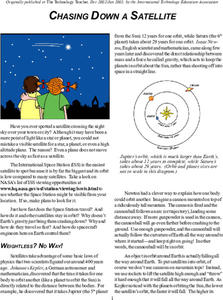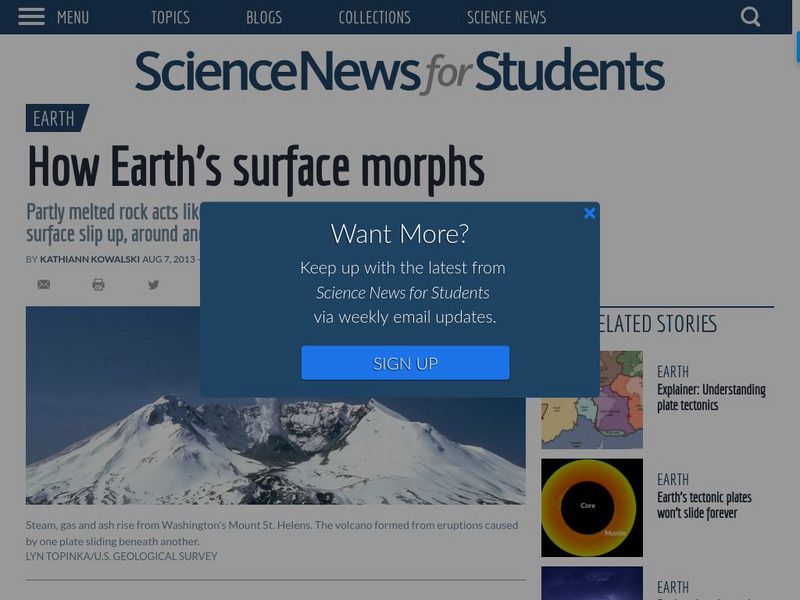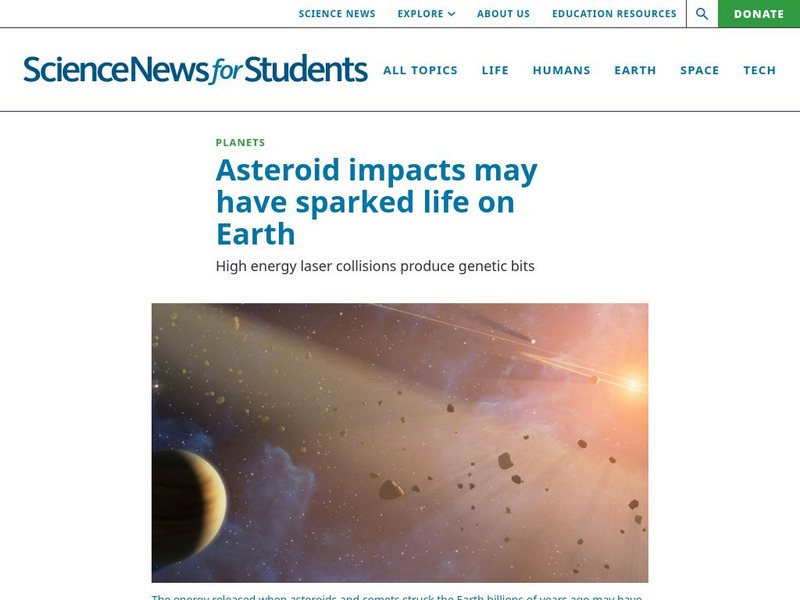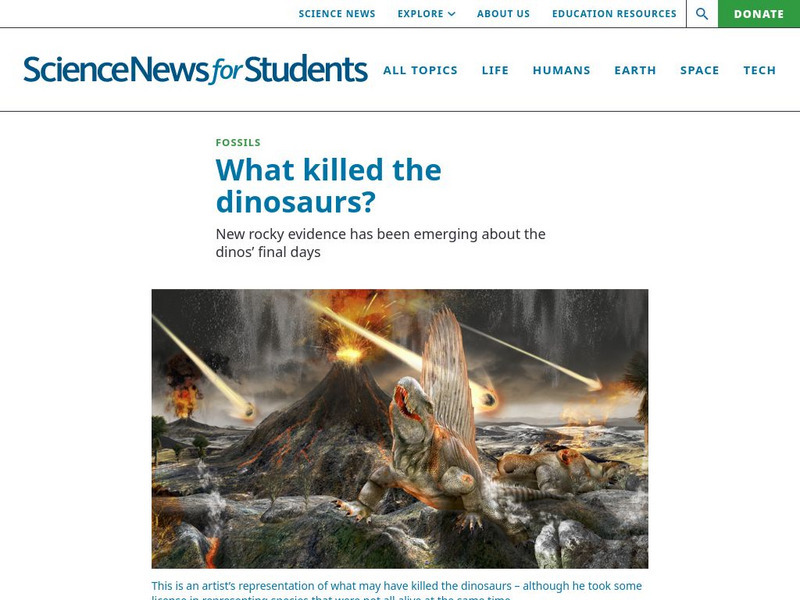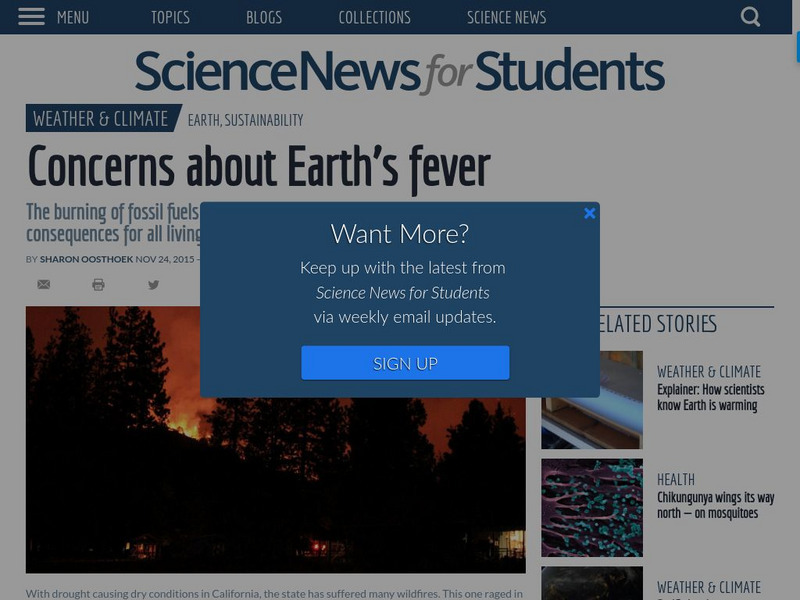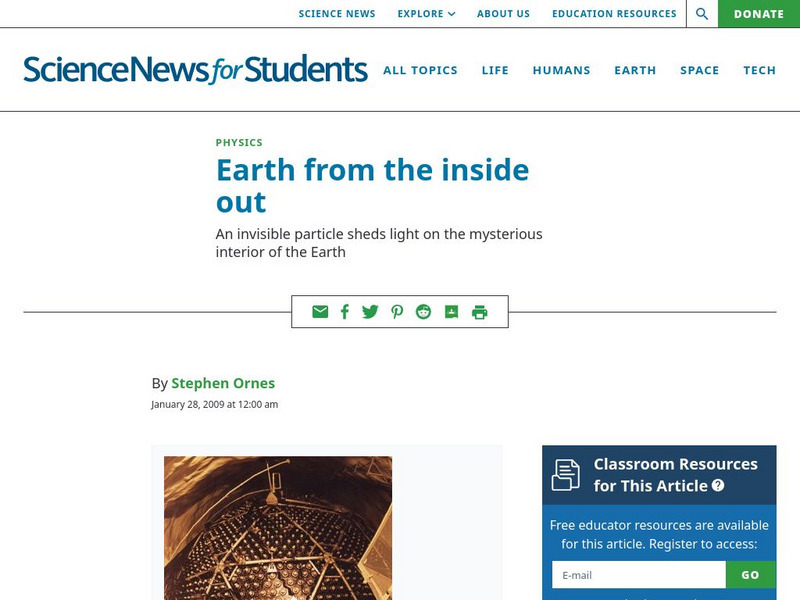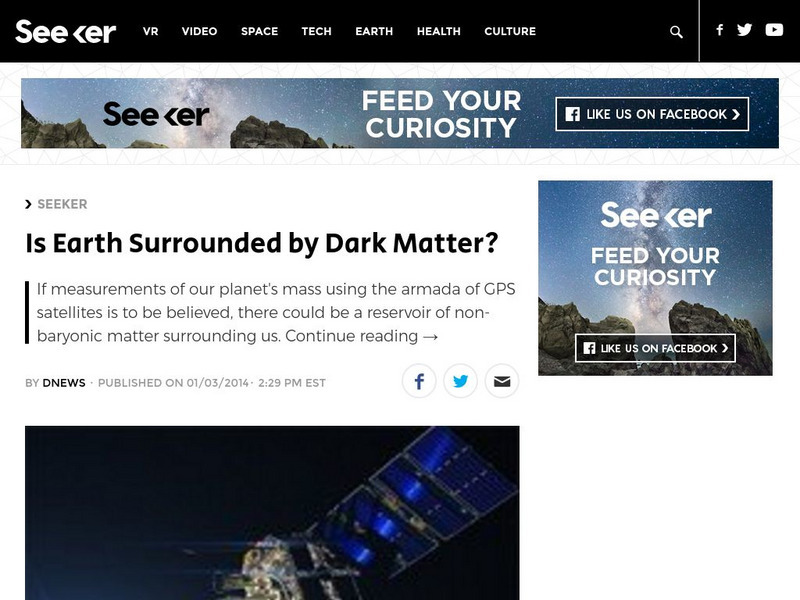NASA
Speaking in Phases
Hear from deep space. Pupils learn how satellites transfer information back to Earth. They learn about three different ways to modulate radio waves and how a satellite sends information with only 0s and 1s. Using sound, class members...
NASA
Keeping Nine Eyes on the Weather
Take a look at climate change from another angle. Readers learn about the MISR instrument on the Terra satellite and how it studies Earth. Pupils experience how the multiple cameras give scientists multiple views so they can better study...
NASA
Water Works on a Blue Planet
Keep within a water budget. Learners find out that less than 2.5% of Earth's water is available to drink—and that there is a fixed amount of water. Scholars read an interesting article comparing the available water to a game of Monopoly...
NASA
Write the Book on Weather Metrics
It's not easy to measure the weather. Pupils learn about what all weather has in common—the atmosphere. Scholars discover how a meteorologists must be able to measure aspects of the atmosphere and decipher the data. They then create a...
NASA
Taking Apart the Light
Break down light into spectra. Scholars learn how atoms emit and absorb photons and come to understand how this process allows scientists to identify different atoms based on either absorption lines or emission lines. Learners then...
NASA
Chasing Down a Satellite
Calculate the speed of the International Space Station. By reading the article, pupils learn about the concept of orbits. Scholars work through a formula to determine how fast the International Space Station is traveling to stay in...
NASA
Packing for a L-o-o-o-ng Trip to Mars
Pack just enough to fit. Crews determine what personal items to take with them on a trip to Mars. Each team must decide what to take with them on a two-and-a-half year trip to Mars and whether their items will fit within the allotted...
American Geosciences Institute
Agi: Why Earth Science
An article discussing why it is important to have an earth science curriculum in schools.
Society for Science and the Public
Science News for Students: How Earth's Surface Morphs
Article reports on how the surface of the Earth changes over time. Includes a list of vocabulary words from the article.
Society for Science and the Public
Science News for Students: Asteroid Impacts May Have Sparked Life
Article reports on a new study that claims that the energy released from asteroid collisions may have sparked life on Earth. Includes a list of key vocabulary.
Other
Aas Science News: Possible Orphan Black Hole
Article reports on the discovery of a supermassive object 90 million light-years from Earth that may be an orphan black hole.
Utah State Office of Education
Utah Science: Change Is My Game
Discover the ways in which the Earth's surface is always changing and what causes those changes through reference materials and a collection of activities.
Story Behind the Science
Story Behind the Science: Just How Old Is Earth? [Pdf]
Article describing efforts in the 19th and 20th centuries to determine the Earth's age, particularly using naturally occurring radioactivity. It notes that scientific disciplines frequently overlap in the work they do. Questions are...
Story Behind the Science
Story Behind the Science: Understanding Earth's Age [Pdf]
Article describing early efforts, beginning with Aristotle, to determine the Earth's age, and the influence of current culture on the acceptability of new and radical scientific theories. Questions are posed throughout about the nature...
Story Behind the Science
Story Behind the Science: Pendulum Motion, Time, and Shape of Earth [Pdf]
Article outlining the scientific history behind the evolution of theories about measuring time based on the movement of a pendulum, and about how gravity would impact a pendulum's movement depending on one's proximity to the Earth's...
Society for Science and the Public
Science News for Students: What Killed the Dinosaurs?
Researchers are beginning to find data implicating that an asteroid impact and supervolcanoes might have been the beginning of the end of dinosaurs on Earth.
Story Behind the Science
Story Behind the Science: Realization of Global Warming [Pdf]
Article describing the history of how scientists developed their current understanding of global warming. It discusses why it is difficult for some people to accept that human beings have caused the Earth to warm, without controlled...
Society for Science and the Public
Science News for Students: So Many 'Earths'
Article reports on the recent discovery that many suns in the universe host "Earth-like" planets. Includes a vocabularly list.
Society for Science and the Public
Science News for Students: Concerns About Earth's Fever
Burning fossil fuels is causing the planet to heat up, causing weather patterns to change, sea levels to rise and diseases to spread. Scientists are concerned with the rising temps of Earth.
Society for Science and the Public
Science News for Students: Earth From the Inside Out
Describes scientists attempts to use geoneutrinos to see 'inside' the Earth.
NASA
Nasa Science: Hunting for Halley's Comet
Imagine riding a balloon to the top of Earth's atmosphere to catch a piece of Comet Halley. During the Eta Aquarids meteor shower, Earth passes through a dust trail left by the most famous comet. This article details how a group of...
Seeker
Seeker: Week of 1 6 14: Is Earth Surrounded by Dark Matter?
Article reports on a presentation that suggests that the Earth is surrounded by dark matter.
Cornell Lab of Ornithology
Habitat Network: Habitat Feature: Bare Earth for Native Pollinators
Find out why keeping a part of your yard as bare ground is important for providing nesting habitat for native bees.
Society for Science and the Public
Science News for Students: Carbon Dioxide Levels Rise Fast and High
The buildup of carbon dioxide in the atmosphere is rising faster than at any time since dinosaurs roamed the Earth. The burning of fossil fuels is largely to blame.
Other popular searches
- Earth Science Moon Phases
- Branches of Earth Science
- Earth Science Minerals
- Earth Science Inquiry
- Earth Science Lesson
- Earth Science Lesson Plans
- Basic Earth Science
- And Earth Science
- Earth Science Map Reading
- Earth Science and Art
- Earth Science Vocabulary
- Science Earth Layers





